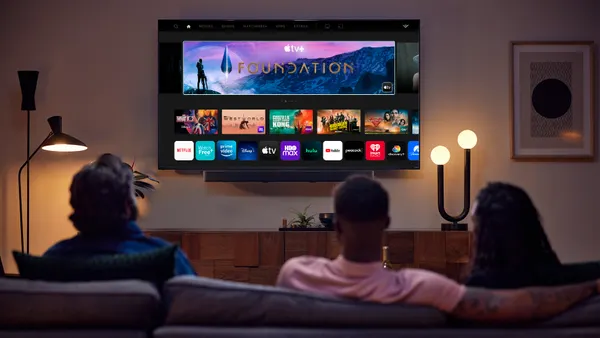Dive Brief:
- On Feb. 15, ad-blocking arrives on Google Chrome, a development that was announced months ago but which a new report from The Wall Street Journal now suggests may be more about parent company's Alphabet Inc.'s bottom line than improving the user experience, which is how the update has been billed. In a blog post today, Google detailed how ad-blocking on Chrome will work, including that all ads — those in compliance with Better Ads Standards and those that aren't — will be blocked on sites if a publisher does not comply within 30 days after receiving a failure notice, as reported by AdExchanger.
- Critics including legal experts and industry sources insist Google's ad-blocking policy will mostly not apply to the ads placed on Google sites, which could prompt advertisers to direct more ad dollars at the company. Most of the blocking will apply to pop-up and auto-play ads, while Google generates most of its revenue from text search ads and rectangular display ads.
- Meanwhile, Google dismisses accusations of it having too much influence over determining which ads will be blocked, saying it was just one of the companies developing rules with the Coalition for Better Ads, a group of advertisers, publishers and tech companies that determined 12 "unacceptable" ad formats. However, coalition members told the Journal that Google developed and performed most of the research that led to the rule-making.
Dive Insight:
For digital media to offer high-quality experiences more broadly, there needs to be cooperation across what is typically a complex ecosystem. However, the Journal's report underscores just how difficult the road to quality digital experiences could be given Google's outsized influence and reputation for indifference. While many have hailed ad-blocking features coming to Chrome as a positive experience for users, others wonder if Google's motivations are truly altruistic.
One of the biggest hindrances to the kind of cooperation that needs to happen for quality digital media is that the ecosystem is dominated so heavily by two main entities — Google and Facebook, which is also part of the Coalition for Better Ads. Given their size — and how much of digital media distribution and consumption takes place on their platforms — it makes sense that they would play a large role in helping to set standards as the industry collectively looks to create better experiences for users. At the same time, both Google and Facebook have generated a lot of bad will recently for how their platforms enable hate speech, "fake news" and other bad content and how they've been slow to respond to situations that arise.
Since announcing plans last fall to let Chrome users block ads, publishers and marketers have worried that Google could unfairly block their content. The company's role in setting the standards for which ads are acceptable and which aren't has also troubled some members of the Coalition for Better Ads, especially since most of the blacklisted formats don't apply to Google's core business, according to the Journal.
The search giant has maintained its commitment to improving the user experience and collaborating with the ad industry to eliminate the most disruptive and annoying ad formats. Chrome is used by about 60% of internet users, so advertisers may be willing to shift their ad dollars and ad formats to meet Google's guidelines so their messages can effectively reach consumers. Google Chrome also lets users mute reminder ads and entire sites that auto-play videos.
Publishers in the U.S. were projected to lose more than $15.8 billion in revenue last year because of ad-blocking software, a 43% increase over 2016. The use of ad-blockers increased 16% from 2016 to 2017, as consumers cited the obtrusiveness, disruptiveness and annoyance of certain ad formats like pop-ups, flashing animated ads and auto-play videos.
The Coalition for Better Ads formed in 2016 with 18 members include Google, Facebook, Procter & Gamble and other big corporations. Google tested 55 desktop and 49 mobile formats for the coalition, and the group ultimately identified six desktop and 12 mobile ad formats to be blacklisted. However, Google didn't test one of its own major ad format — those that run for a few seconds on YouTube before users can skip to their video — the Journal reports. However, a spokesman said those ads will be tested in the future.












